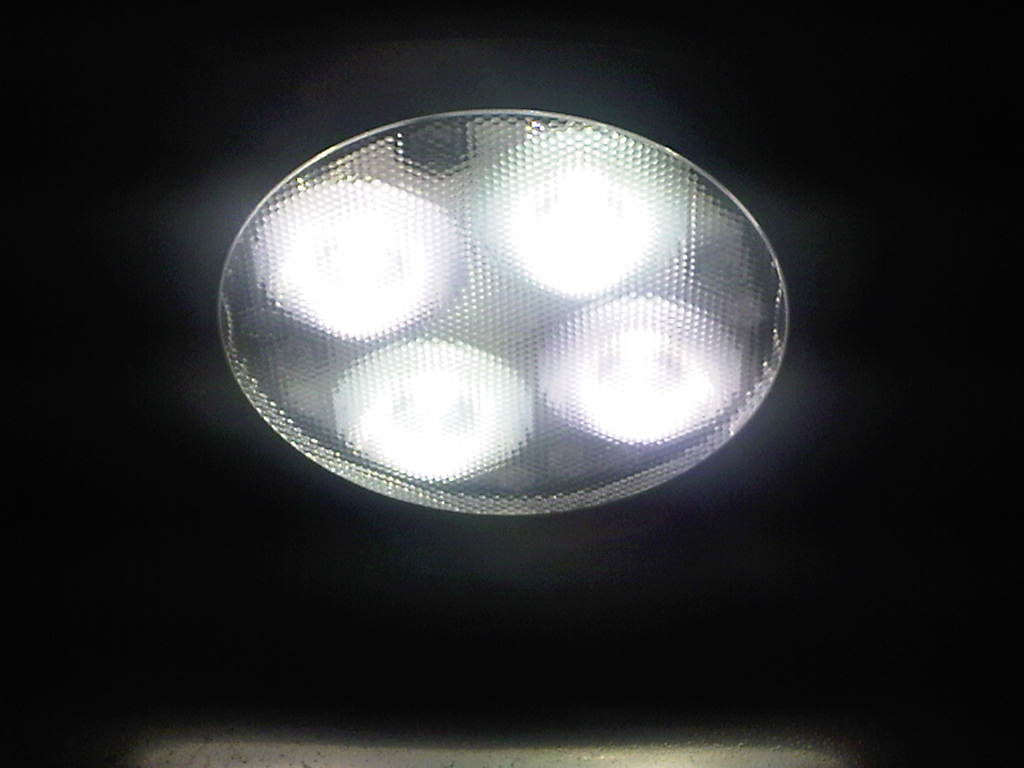This year, much about the holidays is the same as always. But maybe not the lighting. And that may be cause for a little rejoicing.
My wife’s office holiday party last weekend was in the same location it’s been in for the last nine years. Many of the same faces among the office staff, the same balladeer crooning Christmas favorites and spinning pop songs on the virtual turntable, the same tasty buffet with the chocolate-on-chocolate cake to top it off.

Diamonds in the ceiling… (Photo: J. Rogers, in need of a better phone camera for just these occasions)
The more things stay the same, the more they change
But other things have changed, along with some new staff, a fancy new ultra-slim speaker for our crooner friend, and what’s at the top of the music charts. In between my dance floor boogieing to the sounds of Maroon 5 and my eerily dead-on impersonation of PSY (Gangnam Style!), I chanced to look up.
On high, nestled in the same recessed lighting cans, were harbingers of the quiet transformation underway in lighting. Where in past years there had been nothing but incandescent bulbs, now there were gentle, bright, unassuming LED lights. Our party was thriving, our eyes were rejoicing, just as always, but the owner of the function hall was saving 80 percent on lighting from those fixtures.
Next to the dance floor, too, the Christmas tree that previously would have hosted incandescents was garlanded with strings of LEDs. Down one floor, the halls were bedecked with lights on motion sensors, to make sure that they would be off when revelers and staff were elsewhere occupied.

…and on the trees… (Photo: J. Rogers)
Those changes are visible elsewhere, too. In a chapel I visited on Saturday, where the staid chandeliers and sconces held not incandescents (or candles), but compact fluorescent lights (CFLs). On trees in the Boston Common, where LEDs shine forth in place of more energy-intensive choices. In LED-lit store displays.
Why the switch
Even beyond the environmental pluses of using less electricity, the economics of the energy savings are a fine rationale for a switch to LEDs and CFLs and the adoption of other energy-saving technologies. In the case of the party venue, the wait staff told me the owner “just got tired of paying the electric bills.”
For a commercial establishment like that, or a public one like the chapel, the longevity of LEDs and CFLs—and the potential to keep the staff focused on happy patrons, not light bulb changes—is another reason to love them.

…and on the Boston Common. (Sure, they were on during the day. But it was a gloomy day, in need of extra cheer.) (Photo: J. Rogers)
And the market is continuing to move forward. Starting January 1, 2013, the next phase of the U.S. efficiency standards for light bulbs kicks in. Soon 75-watt bulbs will join their 100-watt brethren in having to meet efficiency standards. Manufacturers have responded.
Look up
So this holiday season, if you take a moment to look around, and up — in function rooms, elevators, department stores, or homes — you just might find glimpses of the peace of the season, cause for a little rejoicing, a bit of extra holiday cheer. A quiet revolution in lighting.
Diamonds in the sky. Or the ceiling.
